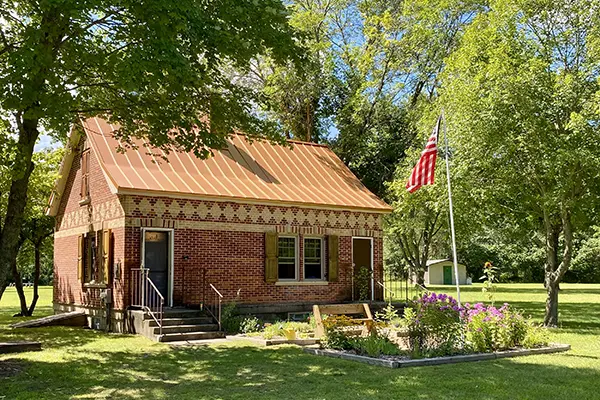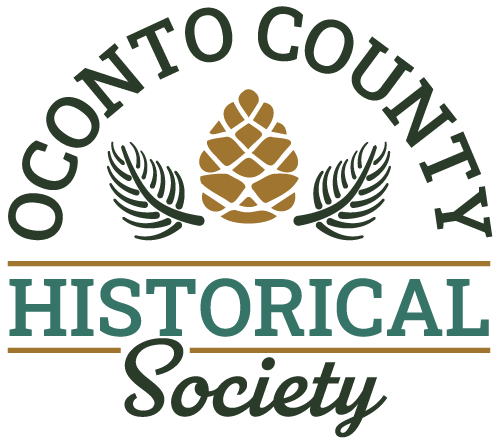Copper Culture Museum
Location
260 Copper Culture Way, Oconto, WI
Hours
Memorial Day to Labor Day:
Open Daily 10:00 am to 4:00 pm
Admission
Admission is free but donations are appreciated. A State Park sticker is not required.
Copper Culture Museum
The museum explains the tools used by the Copper Culture people and their way of survival. A mock excavation pit allows children to experience a dig. More recent artifacts of Native American culture are also on display. A tour guide is available to give an in-depth tour if desired. A foot trail leads from the parking area to a stone monument at the location of the burial ground.
The Copper Culture People
The Old Copper Culture people are early inhabitants of Wisconsin in an area that is the ancestral home of the Menominees. The name, Old Copper Culture, is derived from the fact that these people made a variety of spear points, scrapers, fishing hooks, knives, bracelets, and other ornaments and tools out of copper. They worked the copper by alternating hot and cold hammering, called annealing. They are among the earliest known metalsmiths in the world, and the first known in the western hemisphere. Copper tooling in various fashion has been known around the world for 10,000 years, but this is the first instance of its use on this continent. The copper was mined in the Lake Superior region during the warmer months and transported south to a tooling or village site. Float or drift copper is found in Oconto County and other parts of Wisconsin, Minnesota and Michigan where the glaciers deposited them.
These people lived in the Middle Archaic period. Initial carbon-14 testing conducted at the University of Chicago in 1953 placed these people here as far back as 7,510 years ago, which predates the ancient Egyptian pyramids. However, more recent recalculation of the C-14 test has determined the burials were done in layers between 6,000 to 5,000 years ago. During this period, sustenance was gained by hunting, fishing, and collecting wild foods. Pottery making, mound building, and agriculture of the later Woodland Period were unknown to the copper culture people in Oconto. They buried their dead here using the natural elevation of the land during a high water period.
Potential trade items found include a portion of a lightning shell (a type of whelk found on the Atlantic and Gulf Coasts), and Mississippi River shell. Copper, as well as bone, including a swan bone whistle, and other artifacts were also found in the graves. This is the oldest known burial site in Wisconsin and one of the oldest in eastern North America. Copper artifacts found at distant locations indicate the possibility that Archaic people, too, had a trade network as far-reaching as the Gulf of Mexico and the Atlantic Ocean.
Discovered by 13-year-old Donald Baldwin in 1952, the site was excavated by archeologists from the Milwaukee Public Museum and the Wisconsin Historical Society, aided by the Oconto County Historical Society’s founder George E. (Jimmy) Hall and Senator Reuben LaFave. This Archaic burial cemetery is one of only four of its kind known today. At least 47 burial pits were uncovered, although as many as two hundred burials may have occurred here. The majority are believed to have been destroyed by gravel quarrying in the 1920s. However, had it not been for quarrying, the site might not have been discovered at all.
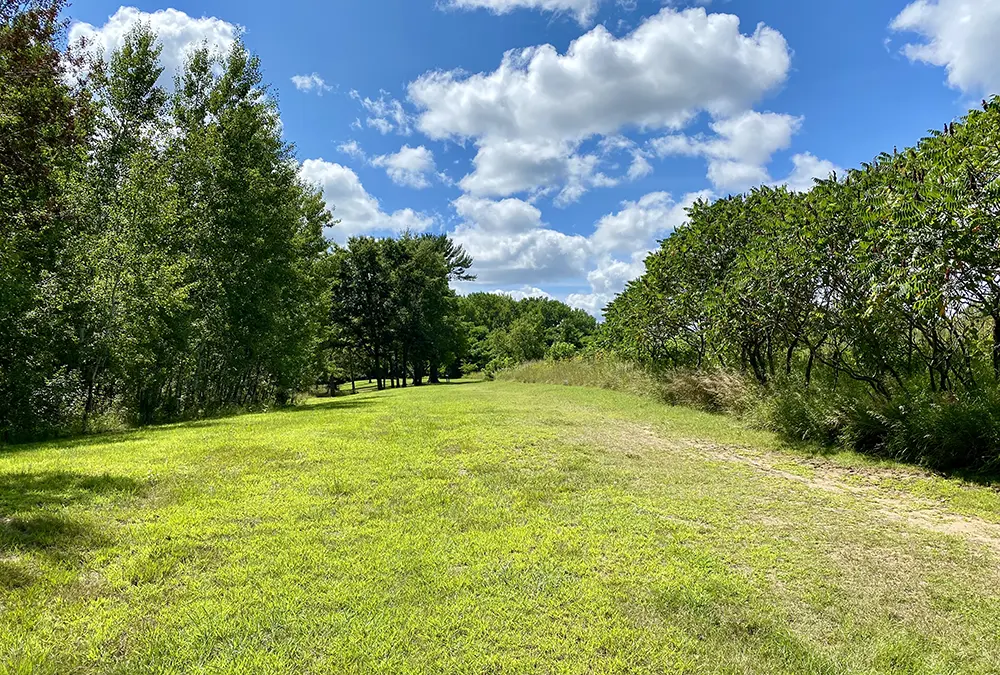
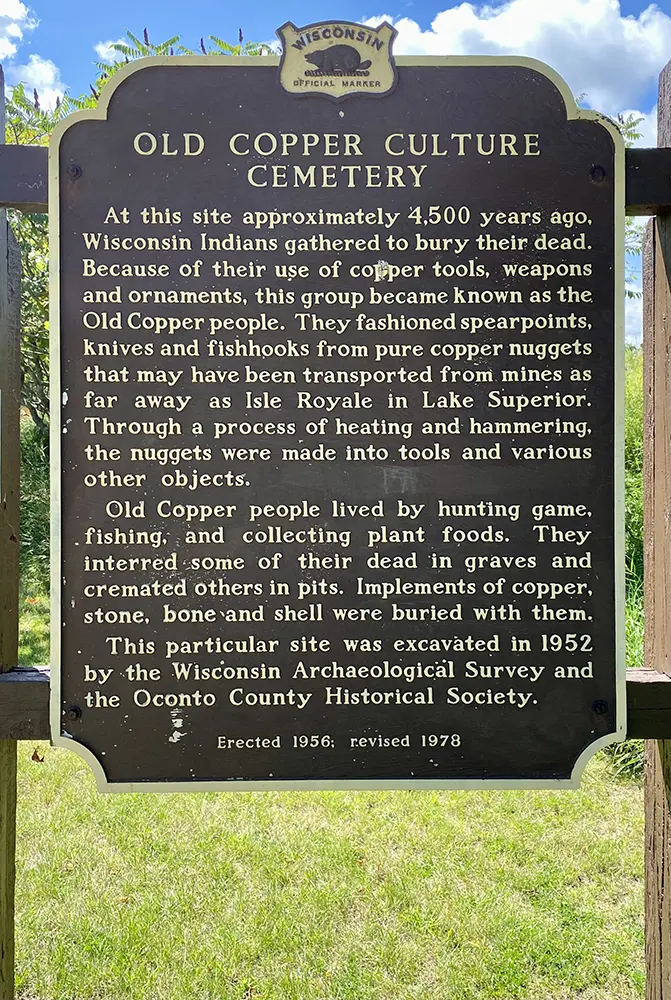
Charles Werrebroeck Home
The Copper Culture Museum is located in the brick building once the home of the Werrebroeck family. Charles and Emma Werrebroeck and their infant daughter, Anna, immigrated to the United States from Belgium in 1911. Their first house here was wood, which was destroyed by fire and Charles, a mason by trade, built the brick home in 1924. Molds were used to form basement blocks over which he built a traditional brick Belgian farm house.
The Werrebroeck property originally had out-buildings, several barns, and a wood shed. A porch attached to the front of the house helped insulate against the harsh Wisconsin winters. The home had no plumbing or central heating; the heat was provided by two stoves, the cooking stove in the kitchen and a pot-bellied stove in the main room. Water was supplied year-round by an outdoor well pump located at the south side of the house.
